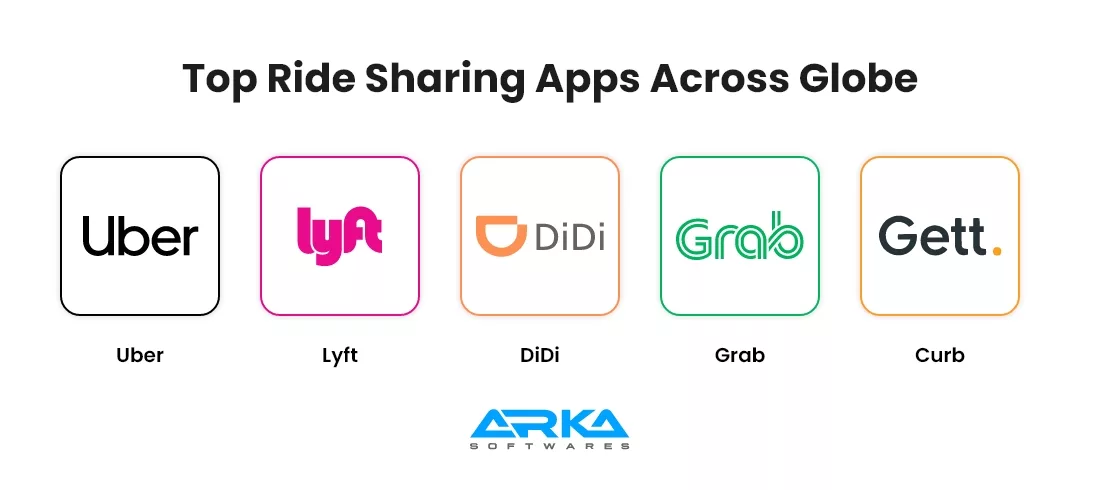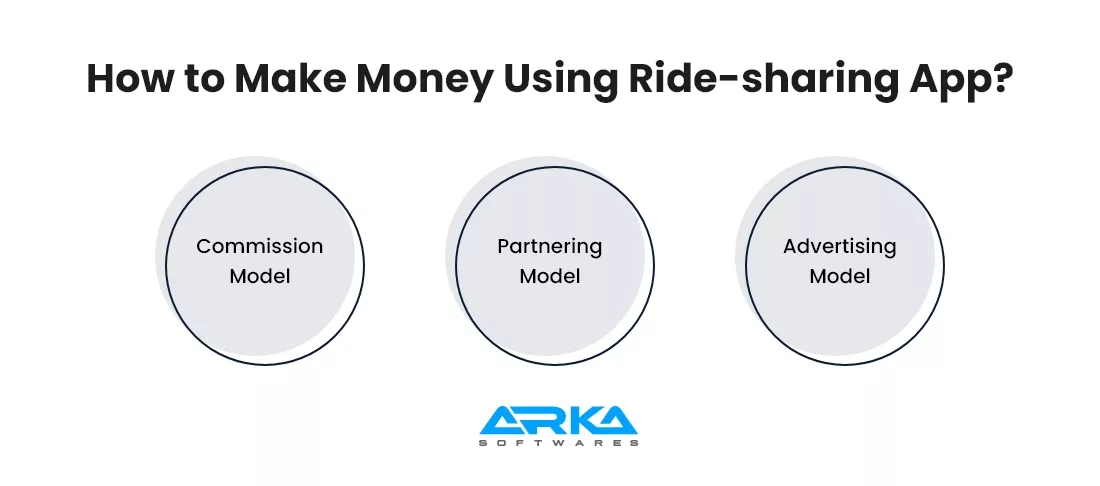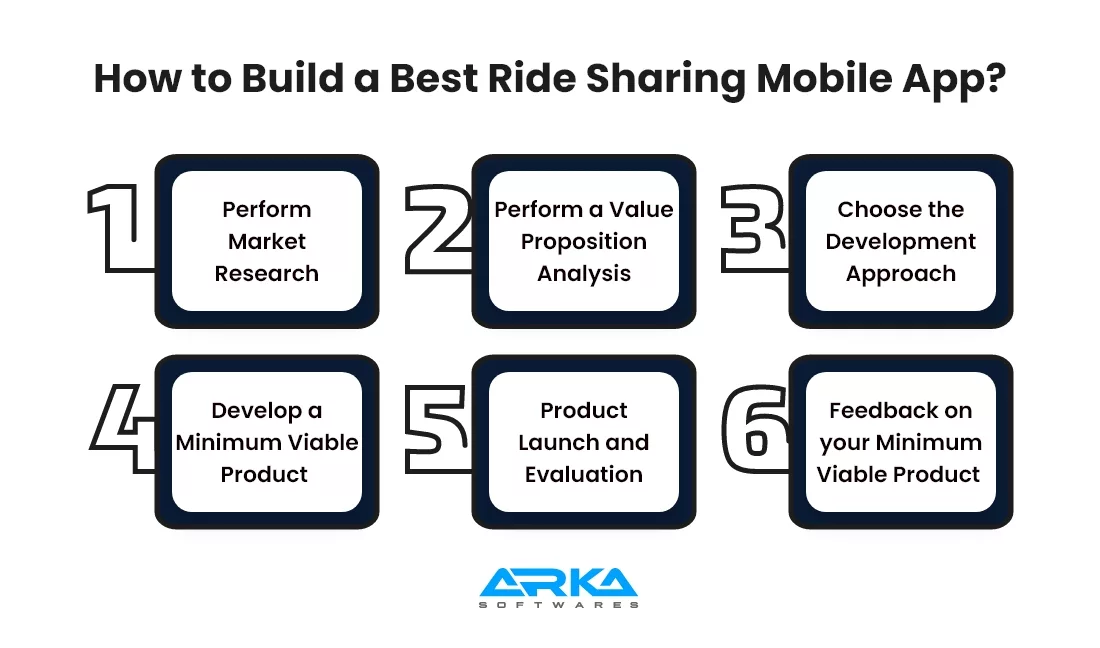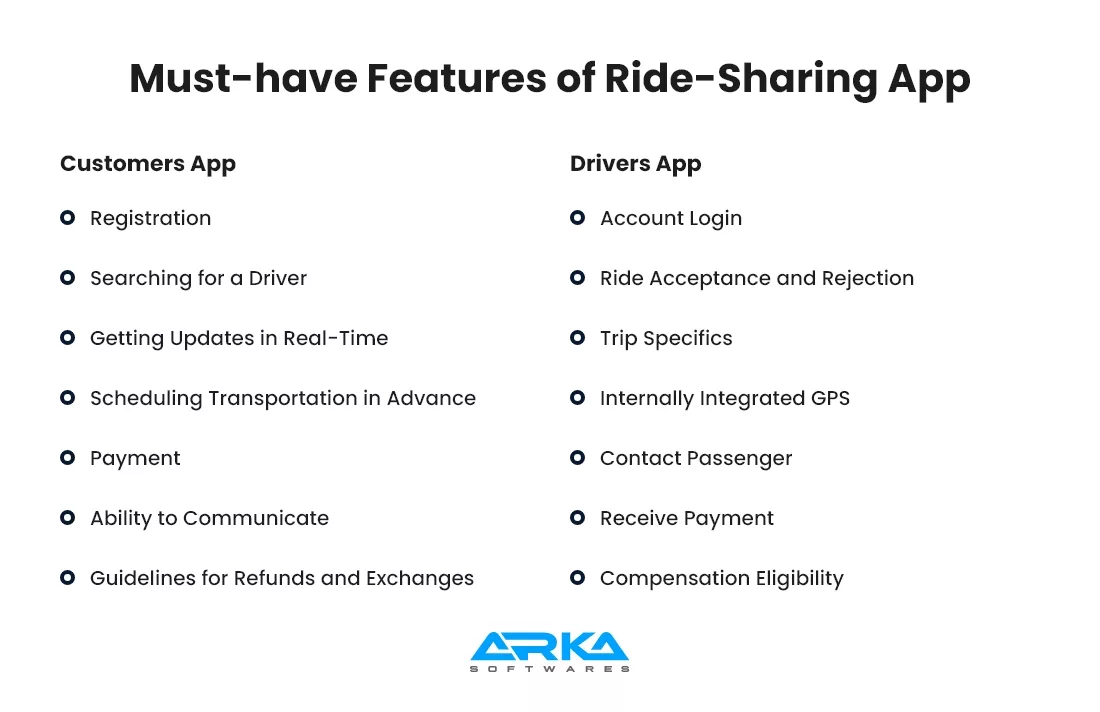The proliferation of ride share apps has been an advantage for those trying to save costs and carbon emissions without sacrificing convenience.
Many companies around the world offered the necessary infrastructure by providing online taxi booking services through an application. Ride share apps reduce travel costs and save time. As a result, 2024 is a great year to create a ride-sharing application like careem and uber and capitalize on the market.
Ridesharing ( also called carpooling ) is a fast and easy way for people to find a one-way ride to their destination. The technology that facilitates transactions between providers of goods and services and their respective clients is the backbone of the “sharing economy.”
The traditional model is needed if you want to build a ride sharing app, in which private companies own the infrastructure, has given way to the sharing economy model, which just permits interactions between people.
To clarify in the ride sharing app development process, the drivers are independent car owners who have adopted the ride sharing business model. Most drivers are self-employed. Therefore, ridesharing companies do not withhold taxes from drivers’ salaries and offer flexible hours.
There is a pressing need for taxi booking app development in the modern economy. People are changing how they arrange trips and how they like to travel.
On the contrary hand, the market is without a doubt thriving. To appreciate why the ride-sharing industry is so promising, it’s necessary to examine the current market.

In the ride sharing software development types of ride sharing apps is one of the crucial segments. mentioned below are the top ride sharing apps across the globe to get the convenience and comfort at one place with just few clicks.

Uber was launched in 2009 as UberCab by Garrett Camp and Travis Kalanick. For its first few years on the market, UberCab catered to those who could afford to ride in style. You can develop uber like rideshare app for your taxi business

Uber’s first official application debuted in San Francisco in 2011. It is now the standard for both iOS and Android. Uber operates in over 70 countries and has facilitated over 7 billion driver journeys.
In 2012, a year after Uber’s 2012 inception, another significant San Francisco-based ride-sharing startup Lyft, was launched.

In the United States, this ridesharing service is available in 644 cities, whereas in Canada, it is available in 12 cities. Lyft is the number two player in the market, behind only Uber, with a 31% share.
Similar to Uber, the Chinese ridesharing company DiDi was established in Beijing in 2012. With a total of $21.2 billion, DiDi successfully raised capital.

When Uber entered the Chinese market in 2016, DiDi forked over $35 billion to acquire Uber China. Uber, in turn, has purchased a 15.4% stake in DiDi.

Grab, a ride-hailing service headquartered in Singapore is an important player in the Southeastern Asian market. This service provider has been around since 2012 and has expanded to over 55 cities in Southeast Asia. Grab employs both individual car owners and traditional taxi drivers.
As a ride-sharing service, Curb is relatively new both internationally and domestically. Located in New York’s Long Island City, this ridesharing service first opened its doors in 2007.

Now, it’s among the best 50 “Travel & Tourism” apps available on both iOS and Android. In its 13 years, Curb has amassed over $40.7 million in funding.
To build a ride sharing app it is required to know how to start on demand carpooling business effectively:

To develop ride sharing app, finding your ideal customer is the first step in launching a successful ride-sharing business. The key to launching a successful rideshare company is understanding your target market.
Get a feel for the demographics of the people who are using the ridesharing service. Once you identify the demographic, you may tailor your offerings to meet their needs.
Start your firm off on the right foot with a solid plan of action. It’s crucial to have a well-thought-out business plan in place that accounts for all of the necessary resources. If you want your business to succeed, you need a plan that is both practical and ambitious. Partnering with a ride-sharing app development company can help ensure you build a robust and scalable platform tailored to market demands.
The next thing to do when launching a ridesharing business is to develop an excellent advertising plan. To reach your target demographic, you need a solid marketing plan.
Advertising and marketing services allow you to connect with consumers no matter where they may be located, online or off.
Even better, it will clearly differentiate your company from the competition. Businesses that don’t advertise themselves usually don’t do as well as they’d want. In light of this, after you have established your rideshare business, you must ensure its prominence.
Know what paperwork and authorizations are required to launch a ridesharing company. Various rules and laws are established by the federal government for each municipality and state.
Therefore, to protect yourself from legal trouble, make sure you are familiar with all of the prerequisites. Whether it’s paperwork, permissions, licenses, or potential roadblocks, it’s important to have a complete picture before getting started. Partnering with a car ride-sharing app development team can also help ensure your platform complies with legal requirements and industry standards.
You may take your ridesharing business to the next level by creating a smartphone app. In order to provide services and sell products, a business needs a smartphone app.
Since we live in a digital age where everyone uses their phones for everything, it only makes sense that people would expect this. The app provides a one-stop shop for customers to easily and quickly book rides through ride-sharing app and reach their destinations.
If you want your on-demand transportation apps to expand and become profitable, you must select a suitable monetization strategy in the ride sharing mobile app development process. The future expenses of the ridesharing company can be reduced by settling on a business strategy.
The three possible commercial strategies are listed below:

To build a ride sharing app common to many ridesharing apps is a commission-based feature. Each financial transaction incurs a service fee in this segment. Lyft, for instance, takes 20% of each fare from the drivers.
More revenue potential and a wider selection of vehicles for clients can be realized through increased collaboration with vehicle providers. To facilitate the spread of electric vehicles throughout Southeast Asia, Grab joined together with Hyundai Motor Group.
Advertising refers to the practice of displaying advertisements for third-party apps within your app to generate modest revenue.
Most ridesharing applications avoid this strategy for fear of alienating their clientele. Having too many ads appear on screen at once can drive away users.
To create bike ride sharing mobile app given below is the step-by-step process to achieve it easily:

Researching the market is essential before releasing a new product. For two obvious reasons
The ride-sharing app business is expanding quickly and showing tremendous potential.
Despite the fact there are ride sharing app development services available, it has been shown that the industry has enormous potential, it is essential to also examine the competition. You’ll be able to fill in the gaps in the current applications and get a sense of what taxi app features will set your product apart from the competition.
When you have a firm grasp of the value propositions and revenue models of the competition, you can move forward with assurance.
It can be difficult to get into the application industry if your product doesn’t stand out from the competition. To this end, it is important to engage in activities such as ideation, analysis, and extensive market research in order to identify a marketable niche or distinguishing trait.
It’s important to pick the functionalities that work for your idea and the audience you intend to reach.
The development of a ridesharing app can be approached in one of three ways: natively, cross-platform, or as a hybrid:
To make your ridesharing software compatible with several platforms, you’ll need to write separate versions of the code for each system. Accordingly, if you want to build a rideshare app that runs natively on both Android and iOS, you’ll need to hire two developers.
Consequently, native app development is more expensive, but the benefits of a superior user experience and brisk performance are well worth the additional expense.
Cross-platform app development is the practice of developing apps for multiple platforms (Android, iOS, and web) from a single source codebase.
It takes less time and money to get this strategy ready for the market. In addition, several cross-platform app development frameworks offer functionality on par with native apps.
Unlike native apps, hybrids can be used on multiple platforms. An HTML5 app, CSS3 app, or JavaScript app are all examples of hybrid apps. When compared to native apps, these do not provide a better user experience or perform better than cross-platform apps, but they do perform comparably.
When designing a rideshare app, you can choose either a minimum viable product (MVP) or a full product development approach. If you are short on funds, creating a minimum viable product is a sensible option.
The primary goal of developing a minimum viable product (MVP) is to create an app with only the functionality essential for defining the app’s value proposition and enticing potential supporters and early customers. This method can help you test your idea with real people and get their thoughts on how to make it better.
If you’ve built a minimum viable product (MVP) for a rideshare app but haven’t yet had it tested by a certified quality assurance professional, you should.
When you’re satisfied that your application is bug-free, you can submit it to app stores for distribution. It may take several days for an application to be approved by the app stores and released to the public.
To figure out what modifications should be made to your ridesharing application in order to get traction, collect user feedback after releasing the product. With multiple revisions, you’ll be well on your way to developing a completely functional product.
To build a ride sharing app the features is an essential component in the development process.

Customers should be at the forefront when we choose what kinds of features to implement. If you are interested in creating a new ride-sharing application, you have likely already used one.
Exactly what features did you find most helpful when using Uber? Lyft? What do you wish they had done differently? These are the sorts of things to think about when designing the interface and features. Listed below are some of the functionalities of the ride-sharing app’s customer module:
The signup process in your app should be prioritized as a top priority. Developing a protected, encrypted space where users may save login information and link their accounts with social media for streamlined access and sharing.
The point of ride-sharing apps is to link users not just with drivers but also with other riders going in the same direction. Any potential customers of yours should be allowed to pick their own route, mode of transportation, and whether or not to take any other passengers.
It is crucial that the user is informed of all live occurrences, such as notifications from the driver or other riders that may delay the vehicle’s arrival.
The option to reserve a ride at a certain time and location is a major benefit of rideshare apps over hailing a taxi. This is crucial for planning trips to and from airports, concerts, dinner parties, and other events.
The payment system for a smartphone application must be extremely versatile. Can your customers pay with a credit card promptly before you pick them up?
Can they pay through services like PayPal, Stripe, and others? Can the fare be divided up beforehand according to the number of people taking the ride and the distance traveled?
Regardless of your best efforts, unexpected problems or discrepancies will always appear, no matter how precise the arrangements are. Having a way to talk to the driver and the other passengers would be a huge help.
It is important to have a well-defined cancellation policy and procedure in place, whether cancellations are last minute or scheduled in advance. Users frequently need to cancel because of last-minute emergencies, scheduled shifts, and other unavoidable reasons.
You can’t run your company without drivers. If you want to meet all of your customers’ needs, you’ll need a reliable and experienced driving crew. Drivers should have the freedom to work whenever they like, cancel rides at any time, and use their own vehicles for service.
To get the most out of them, you’ll need to ensure they’re trustworthy by doing background checks and incentivizing their participation. Here are the Essential features of the driver app include the following:
The driver’s account must be secure against hacking attempts and have a smooth user experience in order to be reliable.
Drivers should be free to accept or decline as many requests as they like, whenever they like, given that using a rideshare application is done at their own leisure.
Before embarking on a vacation, travelers should have all the information they need, including a detailed itinerary, to calculate the time and money required, as well as any locations they might try to avoid.
Using the map provided by the navigation system, the driver can choose the best route to go to pick up the customer and their fellow passengers. Client and co-user destinations can be reached using the same navigation map.
Having the customer’s contact information specified allows the driver to get in touch with them to find out their current location and the best way to go to their destination.
After determining the approximate fare of the ride, the driver should be able to collect money from both the client and any additional passengers.
Lay out in detail how much money each driver can expect to make a per trip, as well as what costs will be reimbursed. Provide them with all relevant information, such as the payment schedule and method.
As mentioned below are the pros and cons of building a ride sharing app from scratch:
It takes around $150,000 to $250,000 in funding to create a ridesharing app in the USA. Such apps are intricate, with a plethora of back-end procedures, and are divided into three distinct modules: drivers, customers, and admins, as discussed above.
Several factors which affect the cost to develop a ride sharing app such as feature count, platform type, outsourcing region, and availability of in-house expertise, can considerably affect the final price tag.
Developing a plan for promoting a ride share app is essential before its release. To assist you, we have provided some suggestions for promoting the application:

To encourage your target demographic to download and start using your ridesharing app, you may incentivize new users with referral bonuses. Uber, for instance, has a referral marketing scheme whereby customers who invite their friends to join the service can earn free rides for themselves.
To increase app downloads, consider forming strategic alliances with manufacturers of various automobiles. For instance, Lyft is working with Waymo to deploy autonomous vehicles. It lets you raise awareness of your brand in the marketplace and foster consumer loyalty.
With some work, you can create a client loyalty program that provides numerous advantages to its participants. Customers who are truly dedicated to Uber and have taken 100 or more Uber rides, for instance, are eligible to join the “Uber VIP” program, making Uber one of the top ridesharing services.
There’s no denying that the ridesharing sector is fueling economic growth. Getting your foot in the door at the earliest is the best way to enjoy high profits down the road.
To that end, we do hope you’ve found this blog to be a helpful resource as you can work with Arka Softwares to develop a mobile app for your taxi business with minimal overhead. Arka Softwares is a Top mobile app development company and they have the expertise to develop on-demand apps for trending businesses.
Contact us today for on-demand ride-sharing service app development!
To generate revenue, most ridesharing platforms collect a fee from each ride’s fare. The app may have additional fees, such as a booking fee or a premium service surcharge.
To safeguard the security of their passengers, ridesharing apps often include various safety procedures. These may include driver background checks, in-app communication among drivers and passengers, and the option for passengers to evaluate and review drivers.
When using a ridesharing app, both the driver and the passenger are normally covered by insurance. Possible examples of this are policies that pay for medical bills and car repairs after an accident.
A ridesharing app can be modified to fit the requirements of a company or group. That may include adding a unique logo, introducing new policies, or incorporating new features and capabilities.
A ride-sharing app’s ability to differentiate itself in a crowded market will depend on its ability to provide a superior user experience and distinctive features.